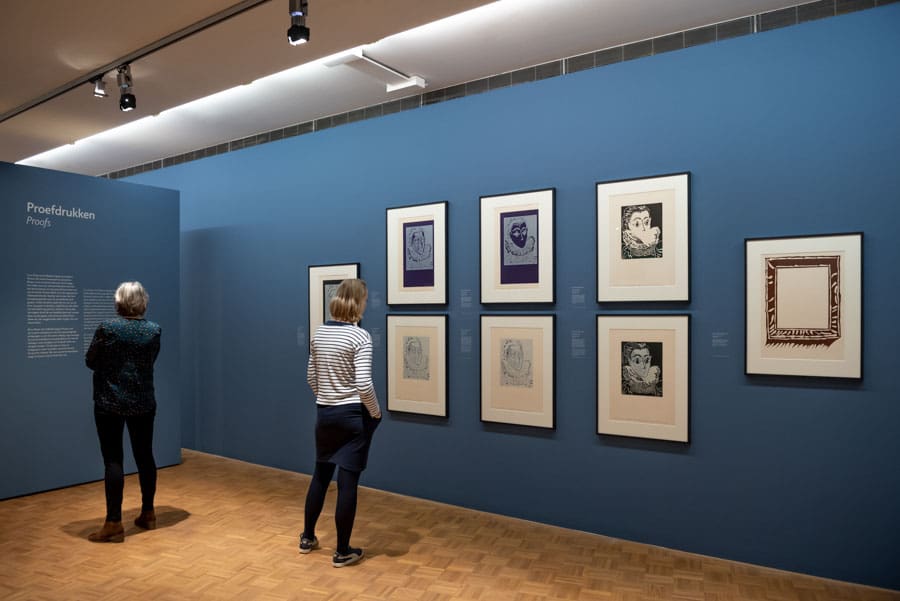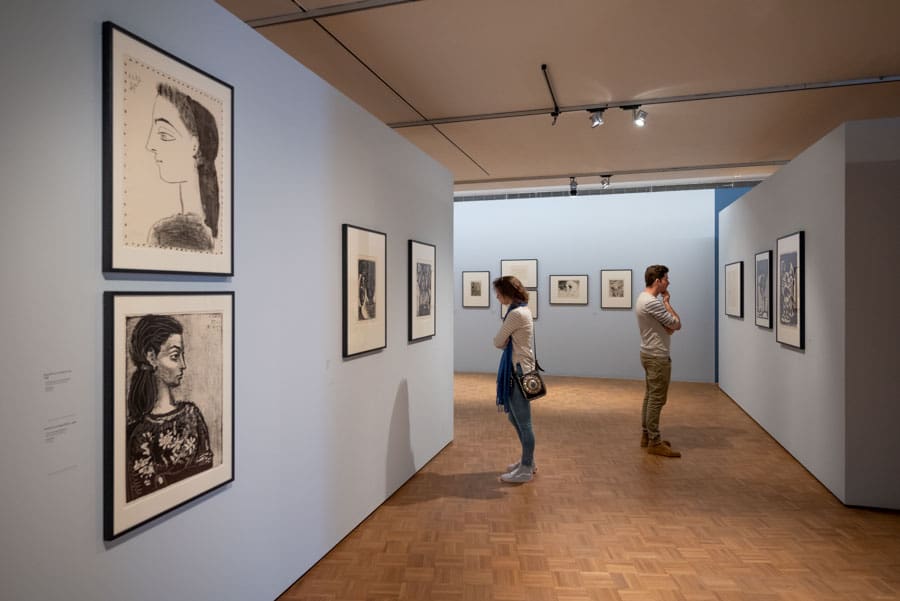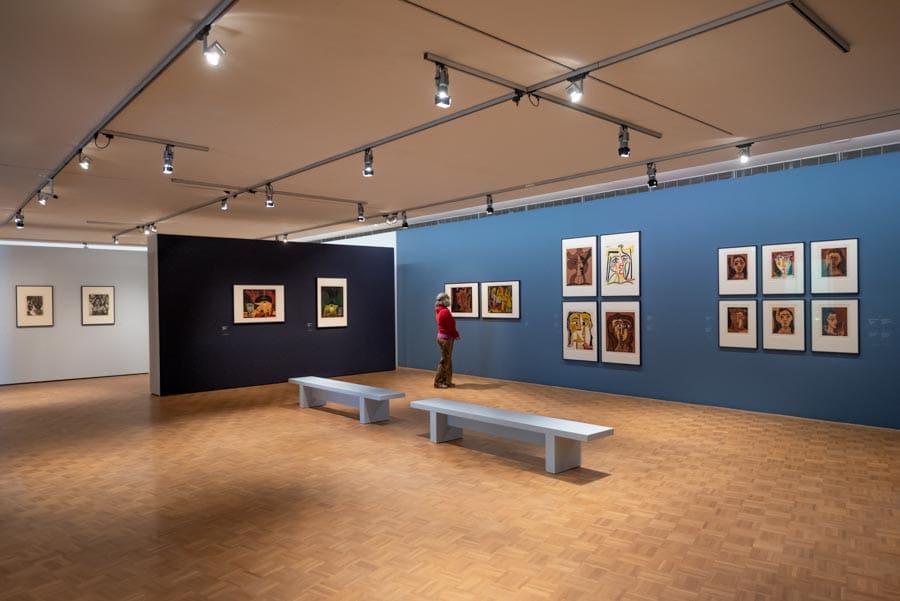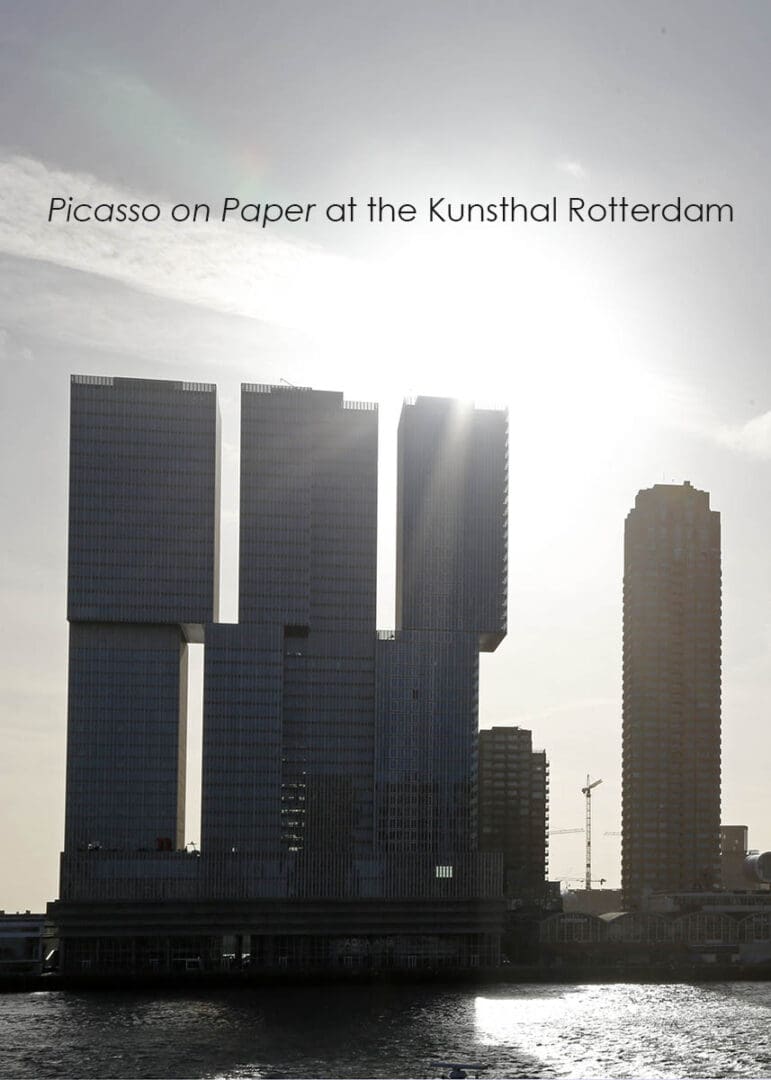Stuart Forster heads to the Netherlands to visit the Picasso on Paper art exhibition at the Kunsthal in Rotterdam.
The Picasso on Paper art exhibition ran from 9 February to 12 May 2019 at the Kunsthal in Rotterdam’s Museumpark. It included more than 70 of Pablo Picasso’s linocuts, selected from the prints collection of the Museum Boijmans Van Beuningen.
“We have a collection of about 400 Picasso prints and I’ve tried to select the most beautiful prints that we have, with a focus on the line of cuts from the 50s and 60s. They are very well represented in our collection. The earlier and the later period, we also have, but not as many as the linocuts,” explained Peter van der Coelen, the Curator of Prints and Drawings at the Museum Boijmans Van Beuningen.
“I think every print that Picasso made is interesting, but the linocuts are very expressive and colourful. I think an audience will like them,” he added as we strolled between the works, which include La Dame à la Collerette, a depiction of his wife Jacqueline in a costume inspired by clothing from the 16th century.

Pablo Picasso’s colour linocuts
Pablo Picasso lived from 1881 to 1973. The prolific Spanish artist produced more than 2,500 prints, experimenting with an array of techniques. He taught himself how to make colour linocuts. His works in this medium depict bullfights, mythological scenes, still life and women.
“The interesting thing is that Picasso started working in this technique only at the age of, I think, 77. In 1958 he made his first linocut…even in his 70s, he tried to do new things and experiment in new techniques,” pointed out Mr Van der Coelen.
“We have a series of proofs. He learned this technique in a way that other artists at a younger age have done,” said the curator, pointing out a series of frames that demonstrate how the prints were layered — printed on top of each other — to create the final work.
“In this print, five layers of ink are printed on each other and then the last thing is to frame. He started with black, then three layers of white, then black again — and then the frame. So you can see how he worked with this process. So that’s interesting, I think, to see how he probably knew what he would get and his way of thinking…It’s the same linocut plate that uses. He had to be very careful not to make mistakes because then everything would be lost,” added Mr Van der Coelen.

The Museum Boijmans Van Beuningen Picasso collection
Rotterdam’s Museum Boijmans van Beuningen started adding works by Picasso to its collection almost a century ago.
“I think its first Picasso painting was acquired in the 1920s or ‘30s and the first prints also came into the collection in this period. In 1955 the museum decided to have a subscription to Picasso’s prints. Picasso made editions of 50 prints — every print that he made there were 50 impressions. You could go to a gallery in Paris, the Galerie Louise Leiris, and buy just a single impression but the museum decided to have a subscription. We have one of every new print made after 1955,” explained Mr Van der Coelen.
“At the end of the ‘60s, the museum decided to stop it because Picasso made so many prints…maybe they didn’t like his style,” he mused with a shrug of his shoulders and a quizzical smile.
“The later prints are more expressive. They are very direct. He made several prints a day sometimes. Sometimes they were qualified as the work of ‘a dirty old man’ who’d lost his boundaries. But now they’re really liked again, because they are so expressive and because of the erotic tensions and fantasies that you can see. I think it’s a nice end to the exhibition to have prints like this. It’s in the same technique as the early work but in a very different style,” concluded Mr Van der Coelen.

Further information
See the Kunsthal website for information about exhibitions, opening times and entry prices.
Renovation of the Museum Boijmans van Beuningen will continue until 2026. Until the reopening, items from the museum’s extensive collection will be displayed elsewhere in the Netherlands and beyond. The Boijmans Next Door project will result in 500 works being shown at eight locations in Rotterdam as part of 11 exhibitions, including Rothko and Me at the Stedelijk Museum Schiedam and the Branding Rotterdam at the Chabot Museum. Selected works will also be shown in the world’s premier museums. The Boijmans van Beuningen Museum’s new mirror-covered depot, currently under construction, will be accessible to the public.
Rotterdam is a 27-minute train journey from Amsterdam Airport Schiphol. KLM connects regional airports in the United Kingdom and Schiphol.
The Rotterdam Tourist Information and Visit Holland websites have information about things to do and see in and around the Netherlands’ second city.
Photographs illustrating this article are by Lotte Stekelenburg and supplied courtesy of the Museum Boijmans van Beuningen. In common with all of the images on Go Eat Do, the photos may not be reused without the permission of their creator.
Enjoy this post about Picasso on Paper at the Kunsthal in Rotterdam? Here’s an article about the Van Nelle Factory, a UNESCO World Heritage Site in Rotterdam. You may also enjoy this A to Z of reasons to visit the Netherlands.
Stuart Forster, the author of this article, was named Travel Writer of the Decade at the 2020 Netherlands Press Awards. He has been named Journalist of the Year three times.
‘Like’ the Go Eat Do Facebook page to see more photos and content. If you’d like to sponsor a post on Go Eat Do, please get in touch by calling 07947 587136.




Kavita Favelle
May 8, 2019 at 19:39Oh marvellous! I spent a day in Geneva once and while walking around the lake I came across a small museum showing Picasso line art like this. I’d had no idea he had created work like this and was blown away!
Stuart Forster
May 16, 2019 at 07:57It was an eye-opener of an exhibition.